What’s Lurking in Your Horse’s Forage?
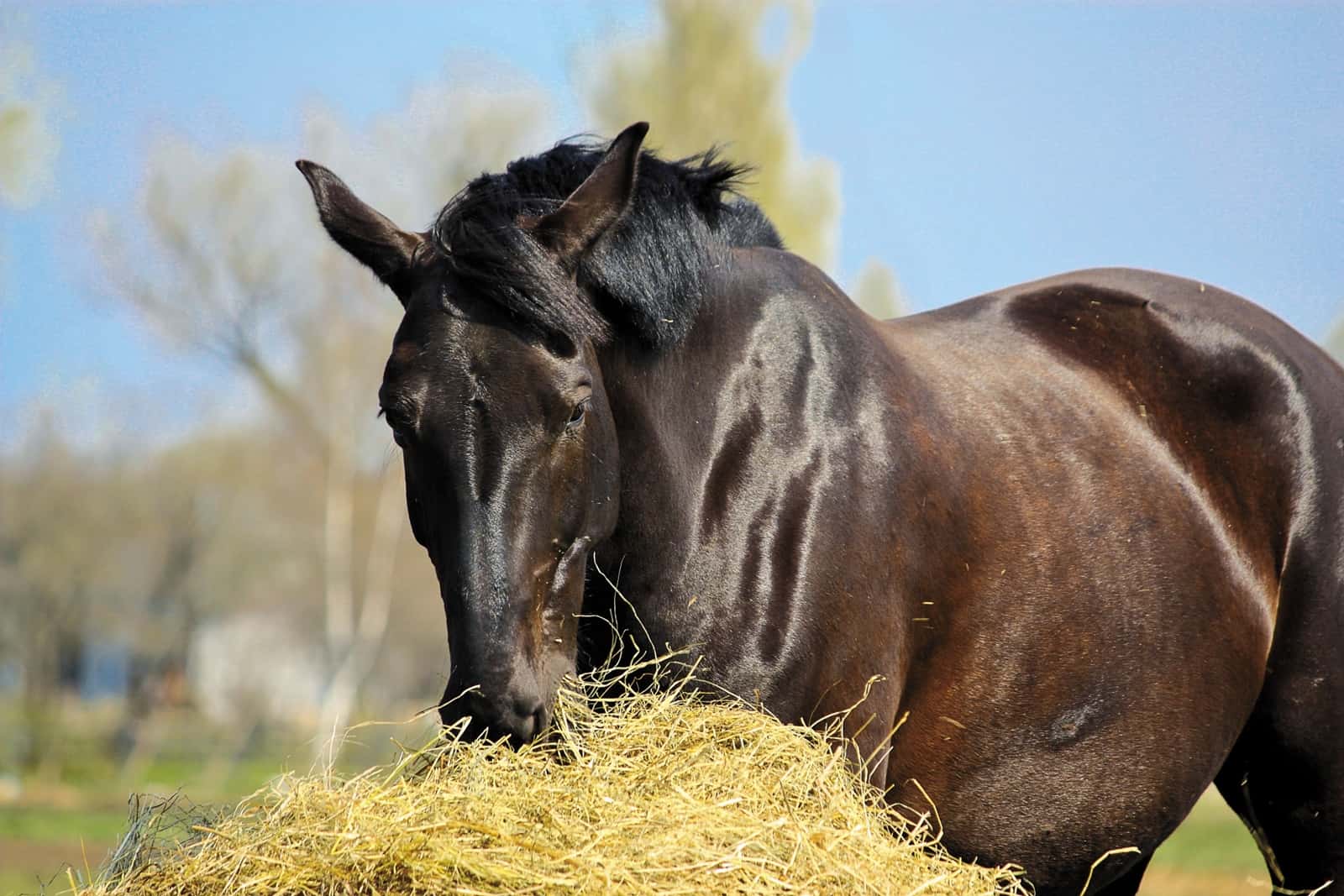
Find out what contaminants could hurt your horses
The hay delivery truck has just pulled out of the drive, leaving behind stacks of expensive hay bales that are a leafy, verdant green, void of obvious mold, and … mmm … they smell so fresh! But wait, how do you know this is the best possible hay for your horse? Could there be hidden horrors lurking within?
Equine nutritionists say the answer is a resounding yes. From toxins and molds to opossum droppings and animal carcasses, forage can contain a variety of harmful contaminants.
“It is the owner’s onus to look beyond the color, cut, crude protein and carbohydrate content, and the leaves, seeds, and stems to see whether or not you purchased good-quality hay or bought yourself a pile of lemons,” says Kathleen Crandell, PhD, nutritionist at Kentucky Equine Research, in Versailles.
Our goals in this article are to alert you to dangers associated with hay, suggest various ways to avoid forage fiascos, and arm you with the necessary tools to find (almost) flawless forage. But don’t let these potential problems dissuade you from feeding hay-based diets! Most horses thrive on forage and forage alone, unless involved in heavy work, breeding, or lactation.
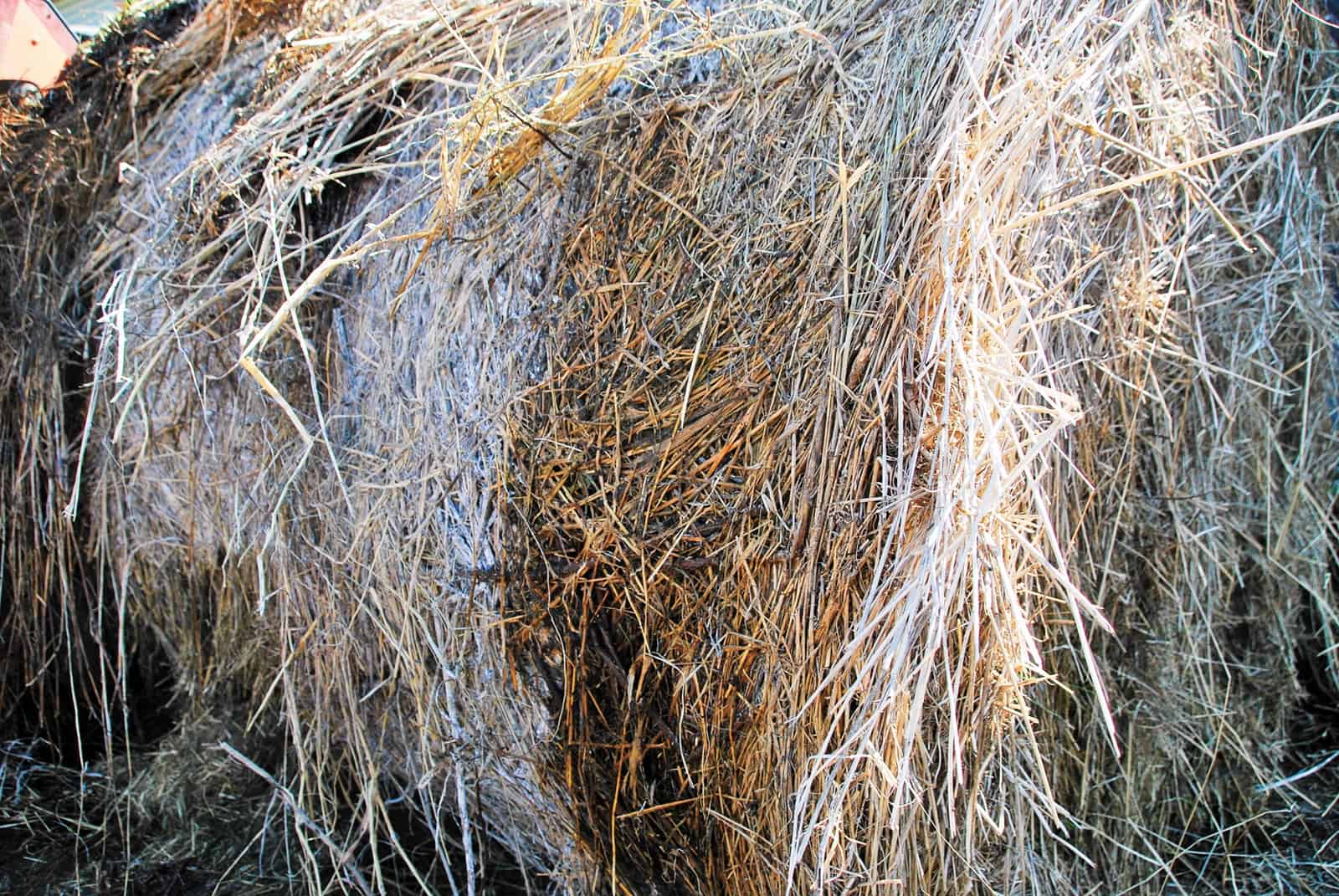
Fungi (Including Molds)
The fungi kingdom includes both molds and yeasts. Molds are plantlike organisms that derive energy from the organic material on which they live. They thrive in moist environments and can grow on forage before and after it has been cut for hay. In general, the faster hay dries after cutting, the less mold grows.
“The presence of mold indicates that the hay was moist for some time before baling or that the hay was baled while it was still moist,” explains Carey Williams, PhD, equine Extension specialist and associate director of Extension at Rutgers’ Equine Science Center, in New Brunswick, New Jersey. “Moldy hay is generally unpalatable, which decreases intake.”
Moldy hay might not have been poor-quality to start with, but it generally becomes such. This is because the mold-inducing moisture causes the temperature inside the bale to rise, and that excess heat damages the hay.
Molds can also produce harmful toxins. Although these toxins are usually a bigger problem in haylage or silage (because of the warmer, moister conditions), moldy hay bales can contain sufficient quantities of toxins to cause serious problems in horses. One example is aflatoxin, produced by Aspergillus spp, which can damage the liver and cause inappetence, depression, fever, tremors, ataxia (incoordination), and coughing. Researchers have proposed a possible link between aflatoxin exposure and recurrent airway obstruction (commonly known as heaves).
Dr. Carey Williams
Unfortunately, a barn-aisle examination of hay alone is not always an effective means of assessing hay quality.
“While some molds are clearly seen or smelled, there are some sneakier microbes that can pose a problem for your horse,” warns Williams.
One such example is the fungal endophyte Acremonium coenophialum, which can live between individual plant cells in tall fescue.
“The fungus and fescue essentially set up a win-win situation,” explains Williams. “It is a symbiotic relationship where the fescue ‘protects’ the fungus and the fungus produces chemicals such as ergovaline that are bitter and unpalatable to fescue-feeding insects.”
Fortunately, infected fescue ingestion is predominantly only of concern to those managing pregnant mares because it causes prolonged gestation and agalactia (lack of milk production). Most other horses can tolerate infected fescue, and pregnant mares can still be offered endophyte-free tall fescue.
Insects and Other Animals
Then are the pests that move along the ground. Sometimes it’s the critter itself (or part of it) that’s the poison, and other times it’s the waste it leaves behind. Here are the common culprits.
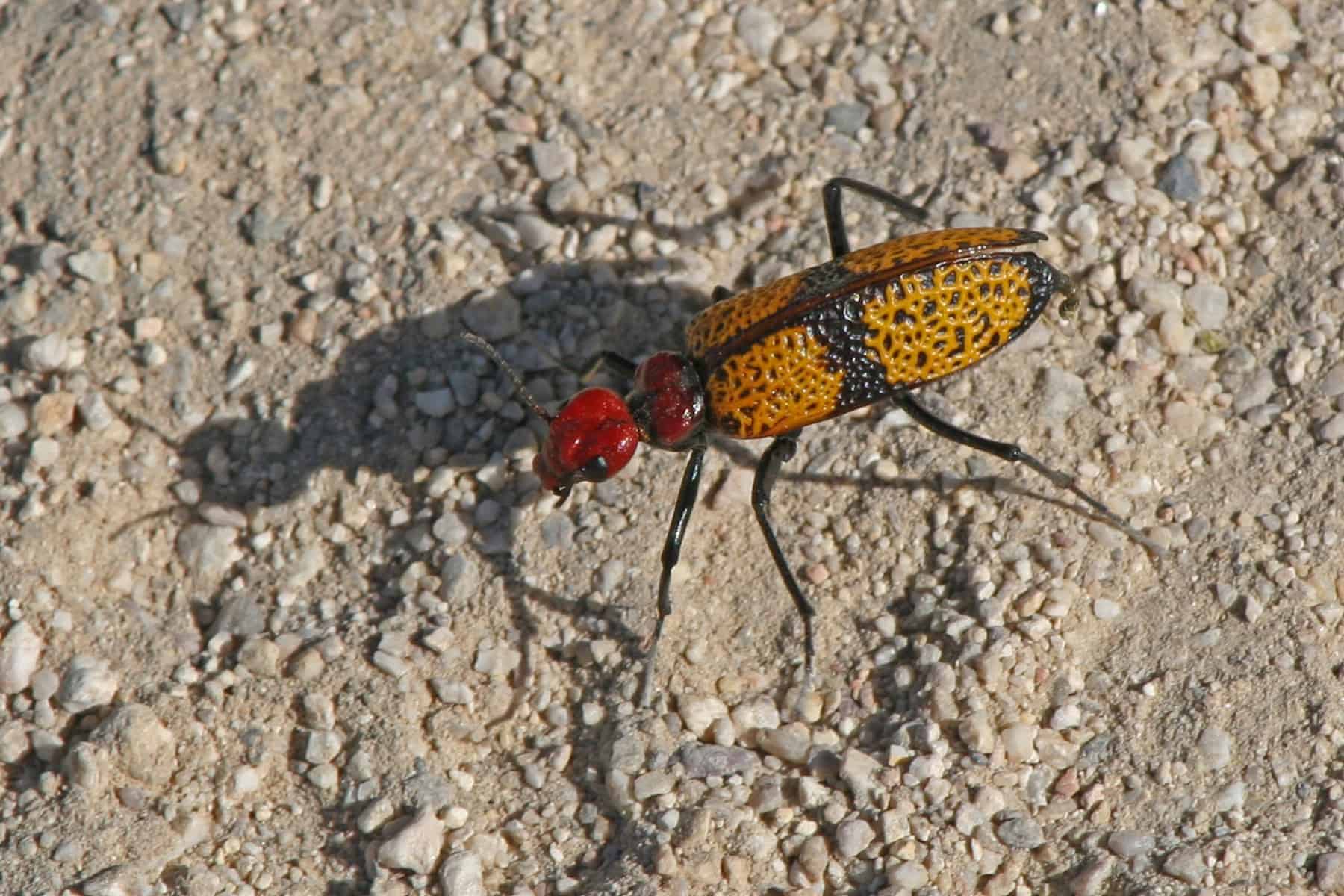
Blister beetles
These alfalfa-loving insects contain a toxin called cantharidin that is reportedly as poisonous as cyanide. The beetles produce cantharidin to protect themselves from predators. The toxin is very stable, remaining poisonous even in dead beetles found in hay bales. Ingestion of relatively small amounts of cantharidin (.5-1 mg/kg, or the equivalent of approximately 700 beetles for an 800-pound horse) can cause coliclike signs, salivation, oral ulceration, acute recumbency, polyuria (excessive urination), and even death.
Cantharidin toxicosis is most commonly seen in the southern United States, but it can occur anywhere producers ship alfalfa hay. Cantharidin is heat-stable; therefore, even processed alfalfa, such as pellets or cubes, can contain the toxic compound. That said, hay producers have guidelines for baling alfalfa with few beetles, and owners are encouraged to buy from reputable local producers. First cuttings pose a lower risk of infestation because beetles aren’t active early in the season.
Eastern tent caterpillars
These hairy insects can cause staggering losses in the equine industry in the form of early and late-term fetal losses and birth of weak foals. Mare reproductive loss syndrome (MRLS) hit the U.S. broodmare population heavily in 2001 and again in 2004.
Researchers suggest MRLS starts in early spring—usually March—when mature caterpillars leave their nests in wild cherry, cherry, apple, and related trees and begin migrating along fencelines and into fields. When consumed or inhaled, the hairs on these caterpillars pierce internal organs, such as the intestines, permitting bacteria to spread to the fetus.
If large numbers of caterpillars are harvested with first cuttings, they can cause problems in pregnant mares consuming that hay. Hay producers should treat tent caterpillars like blister beetles—carefully examining their fields to ensure they don’t have high numbers of these insects.
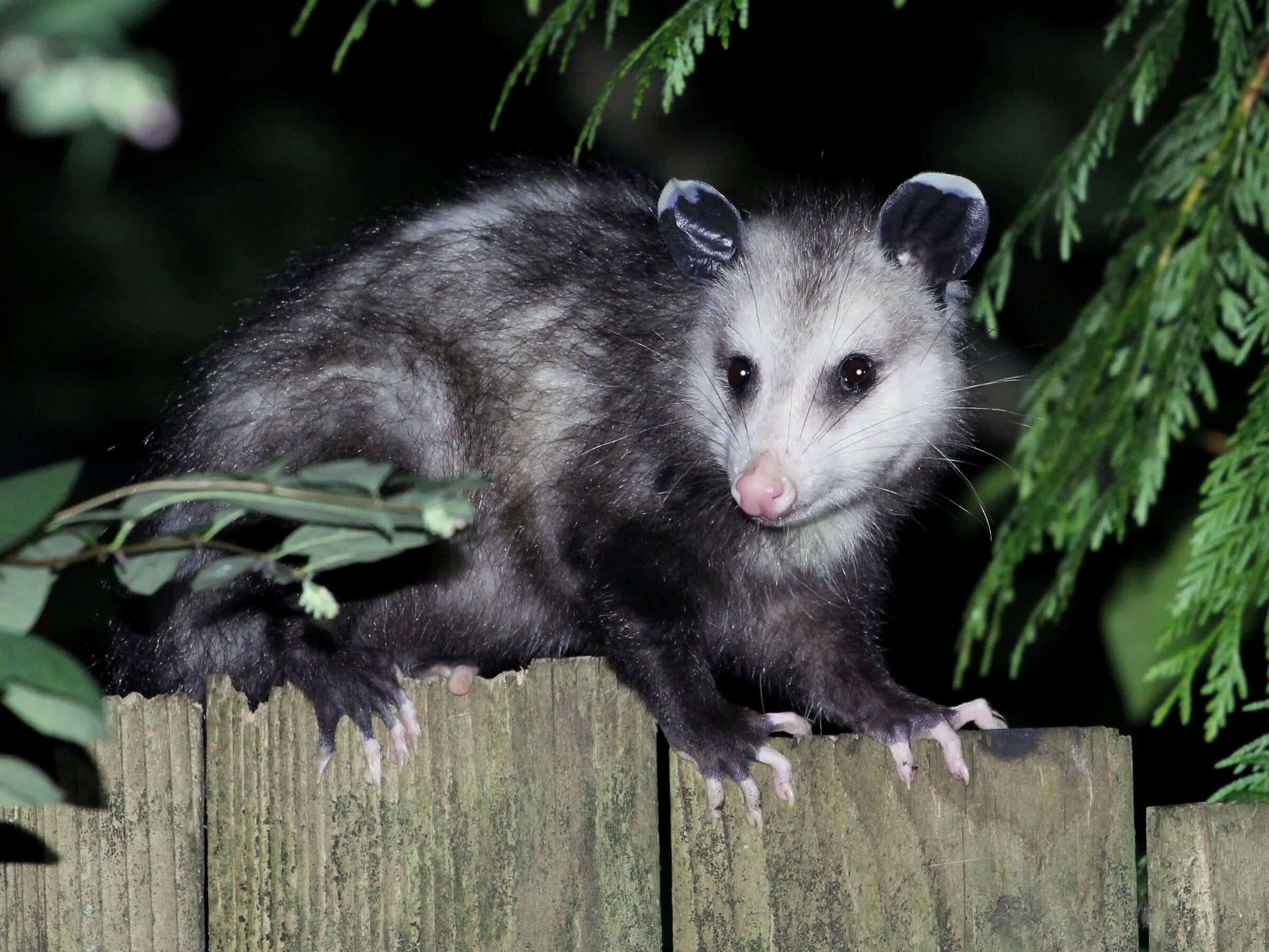
Opossum poop
The poor opossum has a bad rap in the equine community for its role in the neurologic disease equine protozoal myeloencephalitis (EPM).
“Opossums are a definitive host for Sarcocystis neurona, one of the causative agents of EPM,” says Noah Cohen, VMD, MPH, PhD, Dipl. ACVIM, professor of large animal clinical sciences at Texas A&M College of Veterinary Medicine & Biomedical Sciences. “Opossums shed infective sporocysts in their feces, and if horses ingest those sporocysts they can migrate to the central nervous system, potentially resulting in signs of EPM.”
Cohen and others advise horse owners to adopt pasture management strategies that deter opossums (i.e., dark, shady, wooded areas generally serve as their playgrounds) and covering all feed bins and hay bales stored in or around barns to keep them from contaminating feeds.
He adds that property owners can buy and install fencing designed to keep opossums at bay, including barriers that extend underground (opossums are very opportunistic and will often use holes created by another animals) as well as electrified and barbed fences. Their efficacy has not yet been proven, leaving live trapping as a potential alternative.
Rodent and other carcasses

Botulism is a potentially fatal neurologic disease produced by Clostridium botulinum toxins. There are different “kinds” of botulism, but forage poisoning is the relevant topic for this article. Horses can ingest the toxin several ways, most commonly in hay and haylage contaminated with the botulism bacterium either during the raking and baling process or due to improper storage. Horses can also be exposed to the toxin if an animal, such as a rodent, dies during hay or feed processing or where baled haylage or hay bales are stored, allowing the bacterium to enter feed (e.g., through packaging punctures). Contaminated feeds do not appear or smell spoiled.
Once the toxin enters the horse’s bloodstream, it circulates throughout the body and binds to motor nerve cells (neurons). The toxins prevent the neurons from sending nerve impulses to muscle cells, causing paralysis.
Botulinum toxins are very potent, and horses are extremely sensitive to them (far less toxin is required to kill a horse than a mouse, for instance). Clinical signs and death can occur very rapidly following exposure. Early signs of botulism in adult horses include drooling; dropping food; dysphagia (inability to swallow); inappetence; pacing; weakness; exercise intolerance; muscle tremors; depression; and lying down frequently or recumbency.
Weeds
Many weeds (and trees, shrubs, and other plants) are harmful to horses. Crandell lists three typical ways weeds can negatively impact horses:
Physical damage
Some weeds are physically harmful. “A good example is foxtail,” says Crandell. “The seeds and stems of foxtail have miniature barbs that cause physical trauma to the mouth, tongue, gums, and lower gastrointestinal tract when ingested. This can result in substantial discomfort and potential injury if the forage contains enough foxtail.”
Poisoning or microorganism infection
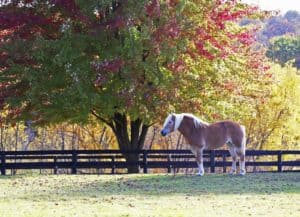
Some weeds produce toxins that can cause colic or neurologic signs, for example. Luckily, many poisonous weeds, such as buttercup (which produces a toxin that causes blistering of the mucosal surface when chewed or crushed), lose their potency once dried, so don’t be too concerned if you spot them in hay. Other weeds, however, remain poisonous—or potentially become more toxic—when consumed in a desiccated condition.
“The seeds, foliage, and bark of wild cherry and related trees produce hydrogen cyanide, a highly deadly compound,” Crandell warns. “The leaves are most dangerous when wilted because the percentage of cyanide increases (concentrates).”
Choking out the hay crop
Finally, aggressively growing weeds can stunt grass growth and undermine pasture quality.
“The exact kinds of weeds that horse owners need to be leery of vary based on geography, the age of the pasture, number of horses grazing a field, and other factors,” says Crandell.
Williams advises owners to contact their local Extension office for a list of common weeds and plants found in the area. “Bear in mind that hay can be shipped long distances from different geographical regions with different weeds of worry,” she warns.
Take-Home Message
“Eliminating forage-related problems begins in the field,” says Williams. “Producers need to ensure that the field is as free from weeds as possible and the hay is processed and stored appropriately to minimize contamination with insects, vermin, and fecal material.”
Although it won’t allow you to catch all potentially harmful substances, it’s important to examine your hay to rule out obvious problems, such as mold, high insect populations, and weeds. Another way to avoid problems is to purchase from reputable producers. Hay is one commodity that typically remains in the “you pay what you get for” category.
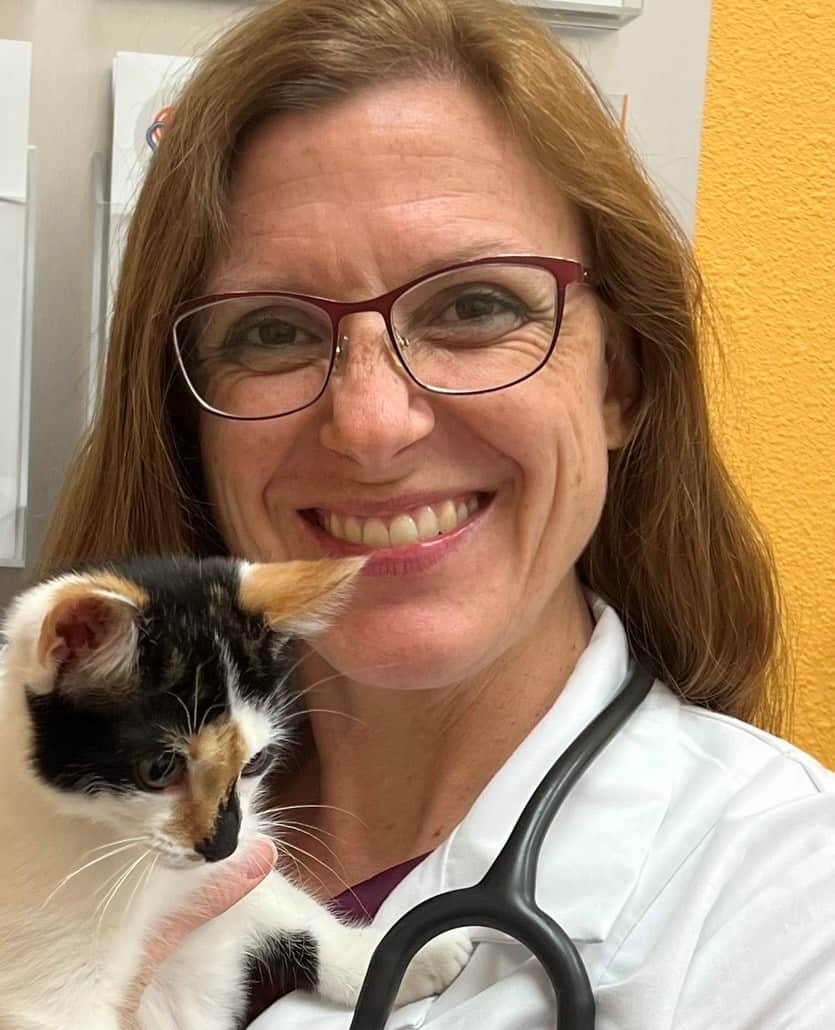
Written by:
Stacey Oke, DVM, MSc
Related Articles
Stay on top of the most recent Horse Health news with












